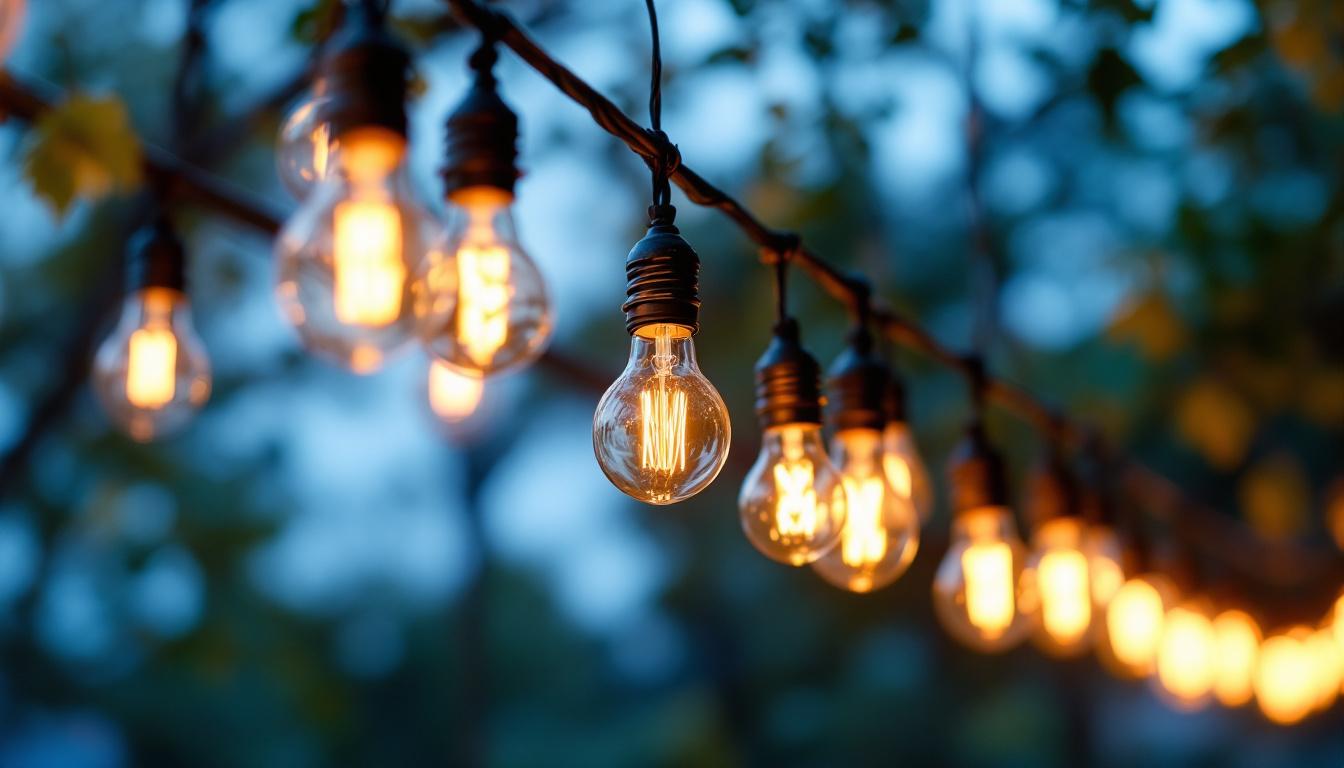
Lighting is an essential aspect of construction and renovation projects, providing both functionality and aesthetic appeal. However, for lighting contractors, navigating the complex landscape of compliance regulations can be a daunting task. Understanding these regulations is crucial to ensure that projects are completed safely, efficiently, and within legal boundaries. This article delves into the key compliance considerations that lighting contractors need to be aware of, providing insights and guidance for successful project execution.
Compliance in the lighting industry encompasses a wide range of regulations, standards, and codes that govern the design, installation, and maintenance of lighting systems. These regulations are put in place to ensure safety, energy efficiency, and environmental sustainability. For lighting contractors, being well-versed in these compliance requirements is not just a legal obligation but also a way to enhance their reputation and build trust with clients. A solid understanding of compliance can also lead to better project outcomes, as adherence to these standards often results in higher quality installations that meet or exceed client expectations.
Several key regulations and standards affect the lighting industry, including the National Electrical Code (NEC), the Americans with Disabilities Act (ADA), and various local building codes. The NEC outlines the safe installation of electrical wiring and equipment, while the ADA ensures that lighting installations are accessible to individuals with disabilities. Local building codes may further specify requirements based on regional needs, making it essential for contractors to stay informed about the regulations applicable to their specific projects. Understanding these codes not only helps in avoiding potential legal issues but also aids in creating designs that are functional and inclusive.
In addition to these regulations, energy efficiency standards such as those set by the Department of Energy (DOE) and the Environmental Protection Agency (EPA) play a significant role in compliance. These standards often dictate the types of lighting fixtures and technologies that can be used, promoting the use of energy-efficient options that reduce environmental impact. For instance, the adoption of LED technology has been encouraged through various incentive programs, as these fixtures consume less energy and have a longer lifespan compared to traditional incandescent bulbs. This shift not only benefits the environment but also translates into cost savings for both contractors and end-users over time.
The landscape of regulations and standards is constantly evolving, making it imperative for lighting contractors to stay updated on any changes. Regular training sessions, workshops, and industry conferences can provide valuable information on new compliance requirements and best practices. Additionally, subscribing to industry publications and joining professional associations can help contractors remain informed about the latest developments in lighting compliance. Networking with peers can also foster the exchange of insights and experiences, further enriching a contractor’s knowledge base.
Moreover, the rise of smart lighting technologies introduces new compliance challenges and opportunities. As more systems integrate with Internet of Things (IoT) devices, understanding the cybersecurity implications and data privacy regulations becomes crucial. Contractors must not only ensure that their installations comply with existing electrical and safety codes but also navigate the complexities of software updates and system interoperability. This multifaceted approach to compliance will be essential as the industry continues to innovate and evolve, ensuring that lighting solutions remain both cutting-edge and compliant with all relevant standards.
While compliance is essential, it often presents challenges for lighting contractors. Understanding these challenges can help contractors proactively address them, ensuring smoother project execution and reducing the risk of non-compliance.
One of the most significant challenges lighting contractors face is navigating local building codes. Each municipality may have its own set of codes that dictate specific requirements for lighting installations. These codes can vary widely, making it crucial for contractors to research and understand the regulations in their project’s location.
Failure to comply with local codes can result in costly fines, project delays, and even the need to redo installations. Therefore, lighting contractors must establish a process for verifying local codes before beginning any project. This may involve consulting with local building officials, reviewing documentation, and ensuring that all designs meet the necessary requirements.
The lighting industry is rapidly evolving, with new technologies and products emerging regularly. While these advancements can enhance energy efficiency and improve lighting quality, they can also complicate compliance. For instance, the introduction of smart lighting systems may require contractors to understand new regulations related to data privacy and cybersecurity.
To address this challenge, lighting contractors should invest in ongoing education and training. Familiarizing themselves with the latest technologies and their associated compliance requirements will not only improve their service offerings but also ensure that they remain compliant with all relevant regulations.
To navigate the complexities of compliance successfully, lighting contractors can adopt several best practices. These practices can help streamline processes, reduce the risk of non-compliance, and enhance overall project outcomes.
Creating a comprehensive compliance checklist can be an effective way for lighting contractors to ensure that all necessary regulations are met throughout a project. This checklist should include key items such as local building codes, NEC requirements, ADA standards, and energy efficiency guidelines. By referencing this checklist at various stages of the project, contractors can minimize the risk of overlooking critical compliance aspects.
Additionally, this checklist can serve as a communication tool between contractors, clients, and other stakeholders. Sharing it with clients can help set expectations and demonstrate a commitment to compliance, which can enhance trust and credibility.
Collaborating with industry experts can significantly benefit lighting contractors in their compliance efforts. Engaging with electrical engineers, code consultants, and legal advisors can provide valuable insights into complex regulations and standards. These experts can help contractors interpret codes, identify potential compliance issues, and develop strategies to address them effectively.
Furthermore, establishing relationships with local building officials can facilitate smoother project approvals and inspections. Contractors who are proactive in seeking guidance from experts are more likely to navigate compliance challenges successfully.
Documentation plays a crucial role in ensuring compliance in the lighting industry. Proper documentation not only helps contractors track compliance efforts but also serves as evidence of adherence to regulations if questions arise in the future.
Lighting contractors should maintain accurate records of all project-related documents, including design plans, installation procedures, inspection reports, and correspondence with regulatory bodies. These records can be invaluable in demonstrating compliance during audits or inspections.
Moreover, keeping detailed records can help contractors identify trends and areas for improvement in their compliance processes. By analyzing past projects, contractors can refine their approaches and reduce the likelihood of compliance issues in future endeavors.
Leveraging technology can streamline documentation processes and enhance compliance efforts. Project management software, for instance, can help contractors organize and store important documents in a centralized location. This not only simplifies access to information but also ensures that all team members are on the same page regarding compliance requirements.
Additionally, digital tools can facilitate real-time collaboration among project stakeholders, allowing for quicker resolution of compliance-related issues. By utilizing technology effectively, lighting contractors can enhance their documentation practices and improve overall compliance outcomes.
Investing in training and education is essential for lighting contractors to stay compliant with evolving regulations and standards. A well-informed team is better equipped to navigate compliance challenges and deliver high-quality work.
Conducting regular training sessions for team members can ensure that everyone is aware of the latest compliance requirements and best practices. These sessions can cover topics such as local building codes, safety regulations, and energy efficiency standards. By fostering a culture of continuous learning, contractors can empower their teams to take ownership of compliance efforts.
Furthermore, inviting guest speakers or industry experts to lead training sessions can provide valuable insights and perspectives that enhance the team’s understanding of compliance issues.
Encouraging team members to pursue relevant certifications and professional development opportunities can further enhance compliance efforts. Certifications from recognized industry organizations can provide contractors with a deeper understanding of compliance requirements and best practices.
Moreover, professional development programs can expose contractors to new technologies and trends in the lighting industry, enabling them to stay ahead of the curve. By investing in their team’s growth, lighting contractors can build a knowledgeable workforce that is committed to compliance and excellence.
Compliance is an integral aspect of the lighting contracting industry, influencing project outcomes and client satisfaction. By understanding key regulations, addressing common challenges, and adopting best practices, lighting contractors can navigate the complexities of compliance effectively.
Staying informed, maintaining accurate documentation, and investing in training are essential steps in ensuring compliance. By prioritizing these efforts, lighting contractors can enhance their reputation, build trust with clients, and ultimately achieve greater success in their projects.
In a rapidly evolving industry, the ability to adapt to compliance requirements will set successful lighting contractors apart from their competitors. Embracing compliance as a core component of their business strategy will not only safeguard their projects but also contribute to a more sustainable and efficient lighting industry overall.
Ready to elevate your lighting projects while adhering to compliance standards? Look no further than LumenWholesale for all your lighting needs. Our extensive range of spec-grade lighting products is designed to meet the highest industry standards, ensuring you deliver compliant, high-quality work every time. With unbeatable wholesale prices and the convenience of free shipping on bulk orders, you can trust LumenWholesale to provide the best value without compromising on quality or service. Explore our selection now and experience the ideal combination of quality, affordability, and convenience for your next lighting project.

Discover how motion detector outdoor lights can transform your lighting projects by enhancing security, energy efficiency, and convenience.

Discover essential tips and expert advice for lighting contractors on selecting and installing bronze weatherproof boxes.

Discover the essential checklist for lighting contractors when installing strip lights for ceilings.

Discover the importance of outdoor hanging bulbs for lighting contractors, enhancing safety, aesthetics, and efficiency.